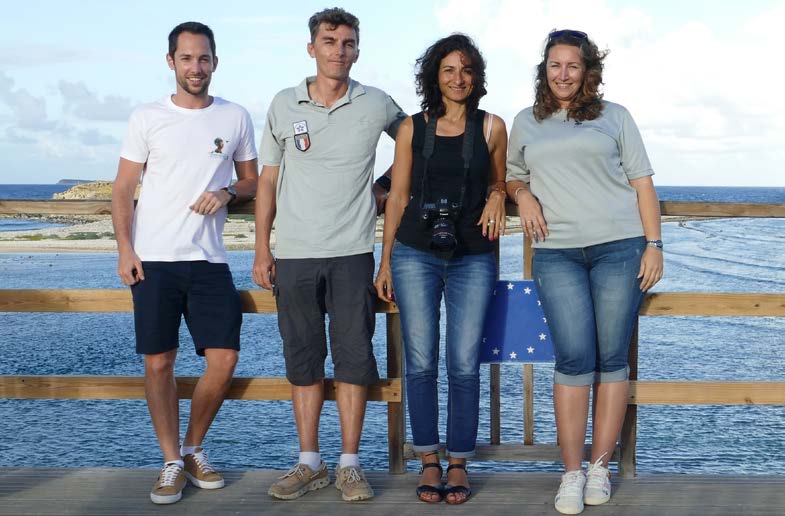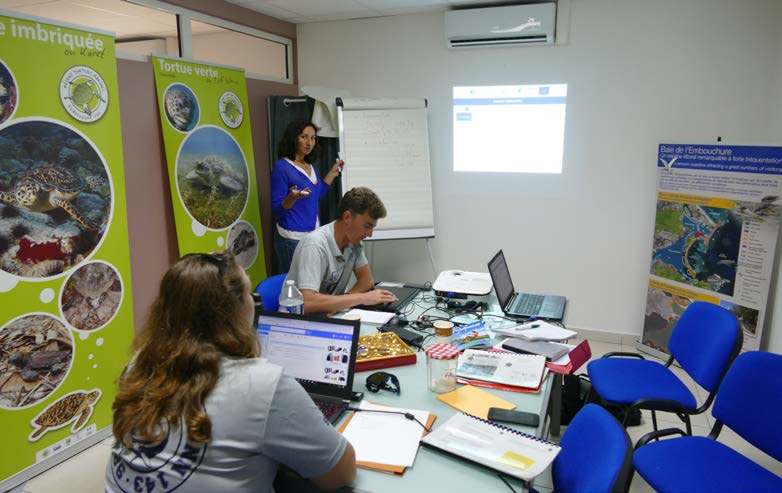As part of the European project, LIFE BIODIV’OM, the goal of Réserve Naturelle de Saint-Martin is to concentrate on the preservation of the Nassau grouper and giant grouper, two endangered species. Aude Berger, who holds a diploma in ocean sciences and techniques as well as a professional degree in environmental protection from the University Antilles- Guyana, was expressly recruited in January 2019 by the Réserve to head this project for a period of five years. Working with Julien Chalifour, scientific director of the Réserve, she was trained in the beginning of the year to use the TESSA tools to measure various impacts inflicted on the natural milieu and the consequences on the services that a healthy ecosystem should provide. More recently, on June 24-28, the two scientists took part in a training session led by two professors from the Centre for Resource Management and Environmental Studies (CERMES) at the University of Barbados, and learned all about the SocMon method for «socio-monitoring.» Initially created for coastal marine ecosystems, this method was adapted to the two grouper species targeted by the LIFE program, in order to understand the challenges, including economic ramifications, as the goal is population growth for these two kinds of fish. For that to happen, they will have to study the history of these fish, as well as understand their use, to be able to identify the roadblocks in creating a sustainable management program. Then on July 10-12, a third professor from the CERMES gave them the necessary tools for a field-based inquiry comprising a questionnaire to help facilitate the challenges related to these grouper species for the population of Saint Martin.
Two species of endangered grouper
Training for Julien Chalifour and Aude Berger

Training for Julien Chalifour and Aude Berger

















